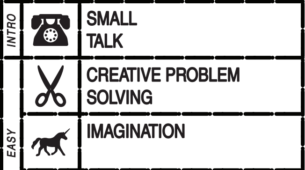
Tiny Room Stories: Town Mystery is an iOS and Android escape‑room puzzler made by the indie studio Kiary Games. The game is aimed at puzzle‑hungry players over the age of 4 who like their mysteries easy enough to finish on a phone but intricate enough to scratch that “detective” itch. The story begins as you arrive in your hometown of Redcliff after a long absence and find every resident missing. What follows is a sequence of diorama‑like rooms you can spin, zoom, tap, and crack open, each one handing you a piece of the larger story. The game’s brilliance is that its core mechanic, which is rotating and unfolding tiny spaces, doubles as its narrative device, where every wall you slide or staircase you reveal can change your understanding of the story, transforming architecture from a decorative aspect to the driver of the story.

From the very beginning you can see how narrative is woven directly into interaction. In the second level, after discovering a key to a safe-deposit box in a bank, we arrive at the bank where rotating the deserted bank exposes a hidden safe; inside lies an IOU from the mayor, hinting at embezzlement before the plot ever states it outright. That single gesture turns spatial manipulation into the story itself, where you literally twist the environment to uncover motives. Zooming into different items to interact with them, rotating the room to see what’s behind the couch, finding items to open doors or cut items, all of these aspects make the architecture in which the level is designed become the focal point. This item-chaining of finding items and utilizing them is so much fun, as a fuse you pull from an attic then powers a street lamp that throws light on chalked symbols, which unlock the crypt in the church on the third level. Each cause‑and‑effect thread is embedded in physical objects rather than telling you directly, aside from the short blurbs before each mission. For the formal elements, the mechanics of rotation, tap‑to‑zoom, inventory, etc., generate a dynamic loop of inspection and deduction, which delivers the aesthetic of that “aha!” moment every time a hidden compartment snaps open.
The layout of the rooms themselves also aids the narrative, as claustrophobic attics slow you down to hunt for single nails or open courtyards encourage more confident recognition before throwing you back into a multi‑stage puzzle. I also noticed that progress often culminates in a dramatic structural shift, whether that be a library wall that slides to reveal an elevator or a church bell that you cut down to break open the floor. Therefore, geography in this game literally pushes you deeper into uncovering Redcliff’s secrets. Compared with similar games like The Room (which centers on one box) or Monument Valley (which is more optical illusion focused), this game treats the entire town as a lockbox that ties all these tricks together using the detective thread of discovery. This lockbox is one that relies on perspective, similar to the game Superliminal, where your perspective in a 3-dimensional space allows you to progress.
Accessibility, however, is where Redcliff’s architecture works against some players. The game relies on tiny tap targets and color‑coded wires that are nearly indecipherable on a small screen or for color‑blind users. Even as someone who doesn’t have any accessibility necessities, I had a lot of trouble at times discerning what was what. Although this ties into the difficulty and enjoyment of the game, spending many minutes just figuring out what to do does not leave room for users with accessibility needs to enjoy the game. There’s a contextual hint system that will provide clues, which is a cognitive bonus for players with ADHD or memory impairments, but it can’t compensate for motor or visual barriers. The absence of pinch‑to‑zoom beyond the built‑in limit when interacting with objects and the lack of high‑contrast outlines make puzzles that depend on visual cues quite inaccessible. Simple tweaks such as larger hitboxes, pattern overlays on colored objects, and a manual zoom would let more users join in on the fun without taking away from the challenge.
Despite those hurdles, Tiny Room Stories provides a fun and interactive take on mystery/escape-room games that relies on enjoyable and intuitive mechanics to tell a story. Every interaction advances both the plot and the player’s mastery, intertwining both the puzzle and the narrative. Architecture doesn’t act as a visual backdrop to this game but rather as the evidence needed to uncover the mystery on Redcliff. I had a lot of fun playing this game, as I had to use much more “brainpower” but was able to do so while also enjoying the story, and this striking balance produced a great game experience that I will continue playing.


